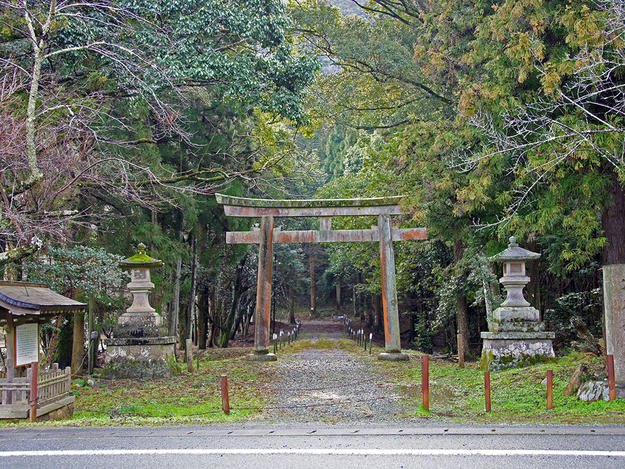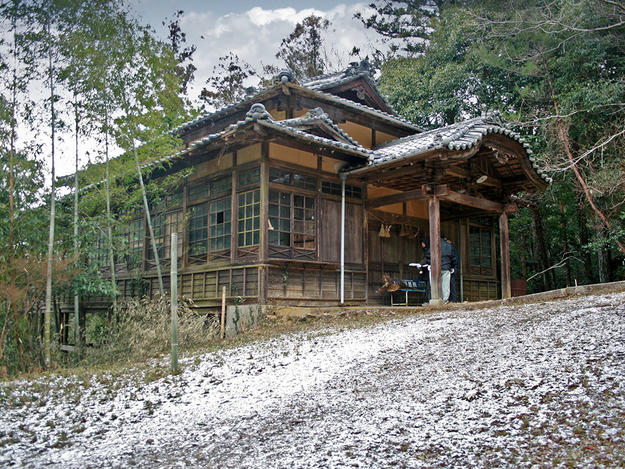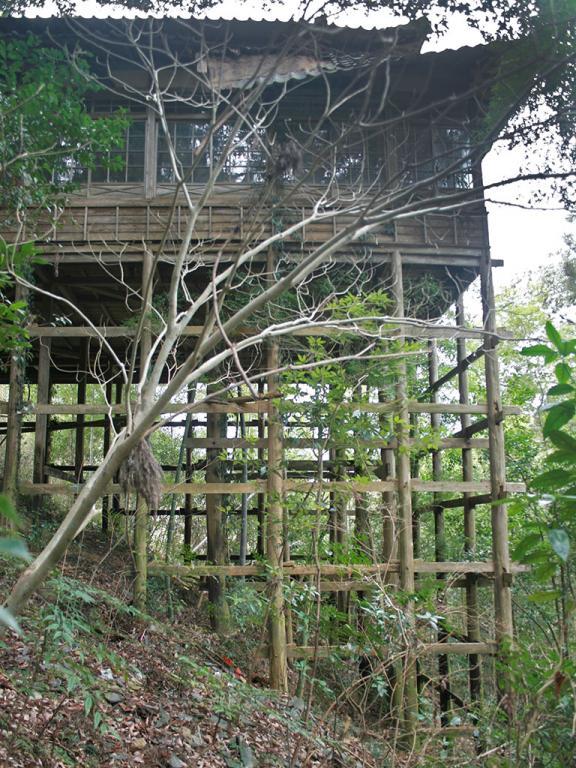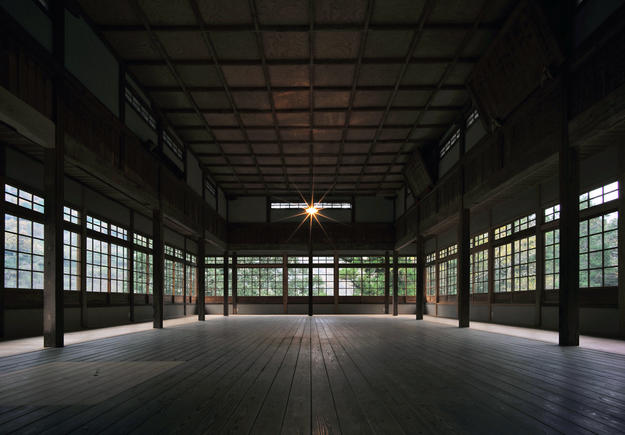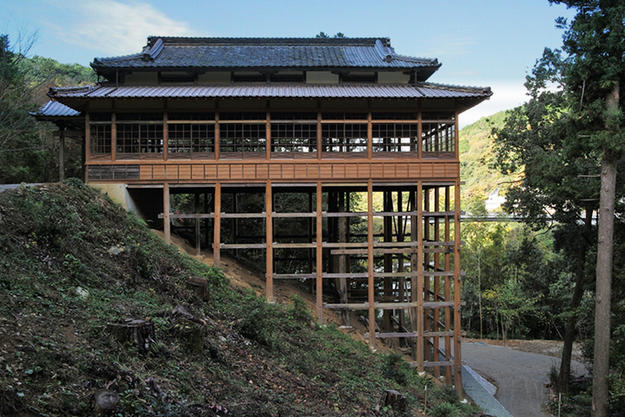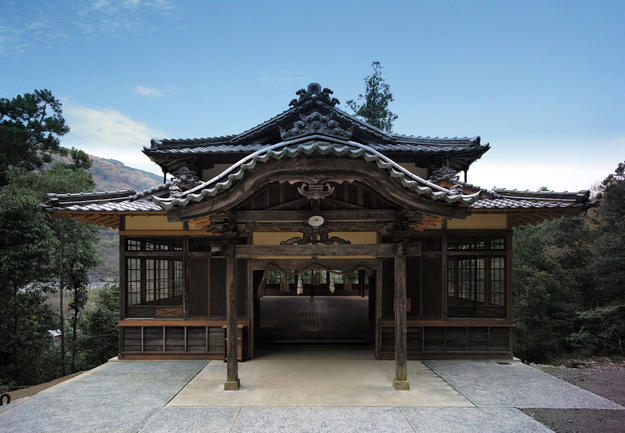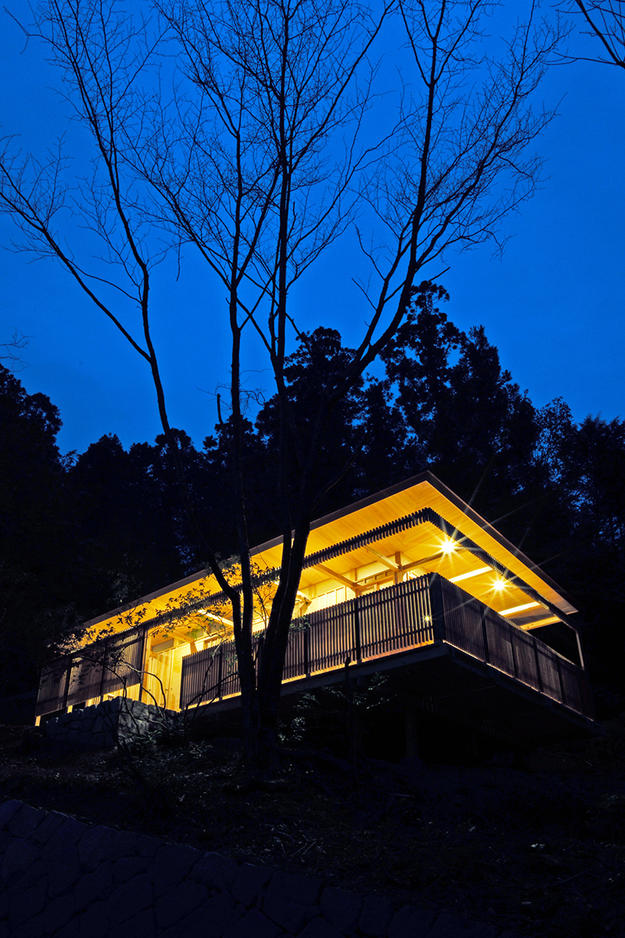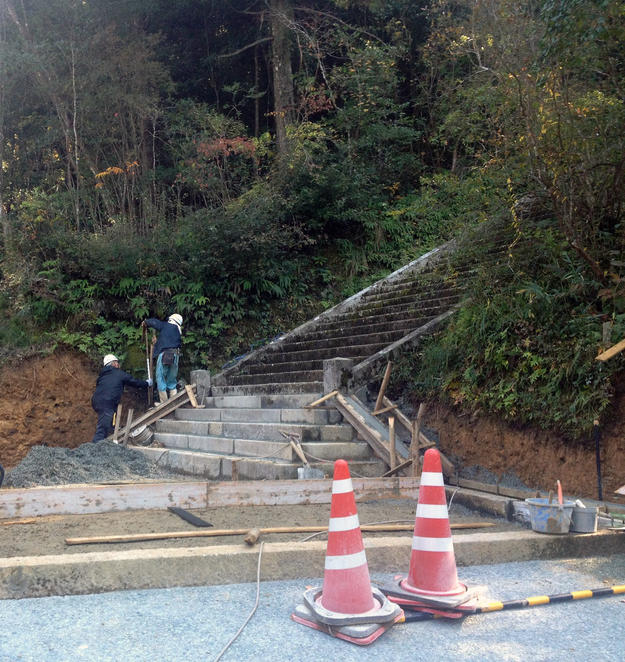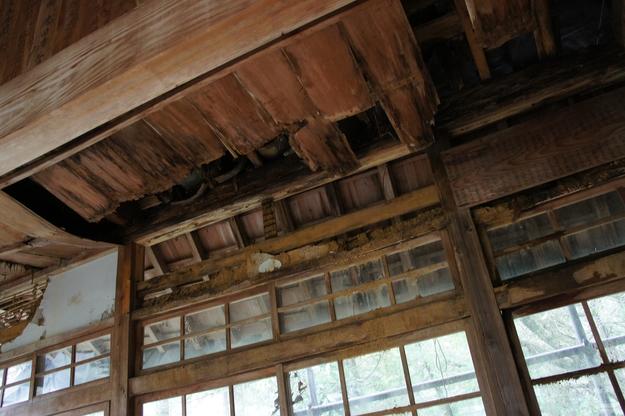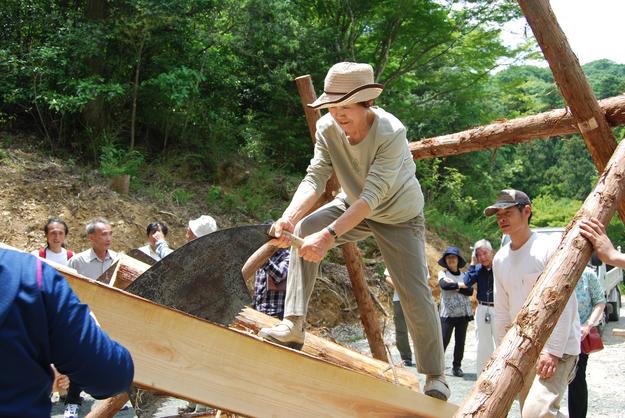Sanro-Den of Sukunahikona Shrine
The Sanro-Den, or private prayer hall, lies within the compound of the Shinto shrine to Sukunahikona in Ōzu on the island of Shikoku. Sukunahikona was an important dwarf deity associated with the creation of Japan and the development of many human arts including that of medicine. Sanro-Den was constructed in 1934 in the sacred precinct, following the traditional kake-zukuri or overhang style. One of few twentieth-century kake-zukuri buildings in Japan, it is almost entirely suspended over a steep slope on a frame of long and slender timber posts. The interior consists of a single large room, glazed on all sides, which was used for religious ceremonies and community gatherings over many decades. When the shrine closed after a gradual decline in the number of Sukunahikona’s followers, the citizens of Ōzu formed a volunteer group with the aim of preserving and maintaining the historic monument.
Community members assist in a successful restoration
Despite the work of the volunteers, Sanro-Den was in poor condition when it was included on the 2014 World Monuments Watch. Water was leaking into the interior of the structure through a failing roof and ceiling, and the floor had partially collapsed. In addition, some of the supporting posts were exhibiting signs of rotting and needed to be replaced. Soon after the announcement of the 2014 Watch, we supported an ongoing restoration project at the site. Conservation work was underway throughout 2014 and included the strengthening of the building’s foundations and the restoration of its posts, beams, roof, ceiling, and floor. Where wood needed to be replaced, cypress was carefully and responsibly sourced from the surrounding area to match the original material as closely as possible. The project also included an evaluation of the building’s seismic resistance and the creation of a medicinal garden on site.
Community involvement was a major aspect of the temple’s restoration. Volunteers assisted in washing 800 roof tiles during the conservation work, and locals attended many special events held at the site. In June 2014, the building played host to the groundbreaking ceremony in accordance with a Shinto ritual which is held to purify Buddhist sites. Two Watch Day celebrations at Sanro-Den, the first in May 2014 and the second in July 2015, provided participants with the opportunity to learn about the Oga-biki, a large traditional saw that was used to process timber for local traditional buildings at the time the temple was built. Attendees were also able to try their hand at cutting wood with the Oga-biki. During the second Watch Day, participants also toured the medicinal garden.
The project was completed in 2015 after improvements to the visitors’ trails and facilities were made. The local community will continue to be involved at Sanro-Den, as new uses for the temple include a cultural exchange center, a heritage tour location, and a private event space. The project also expanded knowledge of kake-zukuri architecture, both ancient and modern. Advocates are hopeful that the success of the restoration might provide the impetus for the preservation of the other monuments in the compound.
Since the Watch
In May 2016, Sanro-Den received official designation as an Ozu City Cultural Property, becoming one of seven structures in the city with such recognition. Under Japanese national law, prefectural and municipal governments can enact local ordinances to protect sites and intangible heritage; those with significant historical or artistic value are designated as cultural properties. This designation will help ensure sustainable preservation at Sanro-Den, as designation allows for subsidized restoration and maintenance, with the provision that no modifications may be made without government approval. Additionally, the designation may result in increased tourism, bringing economic benefits to the community. In September 2016, the project to restore Sanro-Den received the Award of Excellence in UNESCO’s annual Asia-Pacific Awards for Cultural Heritage Conservation. The project was recognized as an exceptional example of community stewardship in heritage conservation.

